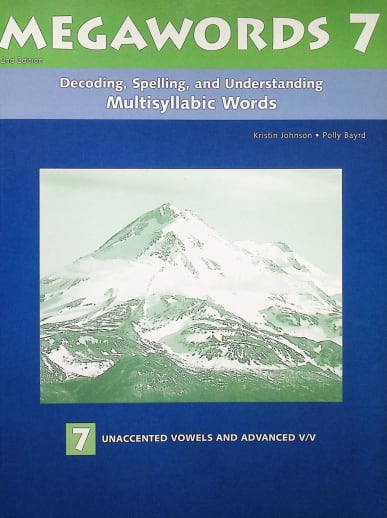Megawords 7 Student Book 2ED
Description
Book 7 focuses on unaccented i and u and on advanced words that require the V/V syllabication rule. Special accent patterns for longer words are introduced. Exercises include spelling practice, proofreading, crossword puzzles, word finds, fill in the blank, categorizing, sorting, and passage reading for fluency and comprehension.
Skills addressed include unaccented vowels and advanced V/V, List 34: -i-, -ity, -ical, -i = /[set schwa]/, List 35: i = long e, u = /[set schwa]/ or long u, List 36: i = /y/, List 37: ti and ci = /sh/, and List 38: Advanced V/V.
Megawords teaches the reading, spelling, and contextual use of multisyllabic words through multisensory instruction and systematic skills progression. It can be used in a variety of settings and across all RTI tiers.
Unaccented vowels i (shwa, i, and y). Unaccented vowel ending patterns (-ity, -ical, -ial, -ium, -ual, -ion, -icial, -itial, -cious, and -cient). 470 words.
| Product Format: | Softcover Book |
|---|---|
| Grades: | 10-11 |
| Brand: | Educators Publishing Service |
| Author: | Kristin Johnson |
| ISBN: | 9780838809129 |
| Length in Inches: | 11 |
| Width in Inches: | 8.5 |
| Height in Inches: | 0.25 |
| Weight in Pounds: | 0.5 |

